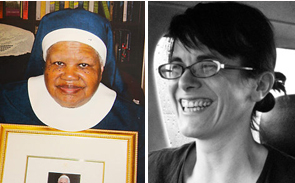On Tuesday, Manhattan District Attorney Cy Vance announced the sentencing of Dyson Williams, the driver who killed Mary Celine Graham while attempting to evade police.

On June 22, 2010, police investigating a string of gunpoint robberies stopped a minivan occupied by Williams and William Robbins near W. 142nd Street and Adam Clayton Powell Boulevard, according to a Vance press release. As officers questioned Robbins outside the vehicle, Williams, who was in the passenger seat, got behind the wheel and drove away.
Police reportedly pursued with lights and sirens. At W. 122nd Street and Lenox Avenue, Williams collided with another vehicle and careened into a group of people. Four bystanders were injured. Sister Mary Celine Graham, an 83-year-old nun, was killed.
Williams was charged with murder, along with other charges related to the crash and the robberies. In May he pled guilty to second degree murder, robbery and assault. On Tuesday Williams was sentenced to 17 years to life. Robbins pled guilty to first degree robbery and on June 21 was sentenced to 15 years.
"The sentences imposed on these two defendants hold them accountable for the tragic aftermath of their reckless actions,” said Vance in a written statement.
Graham's death was the second case prosecuted by Vance involving a pedestrian death during an NYPD car chase. In January 2010, Karen Schmeer was crossing Broadway at 90th Street when she was struck by David McKie. McKie was racing north on Broadway after he and two other men, also in the car, shoplifted over-the-counter cold medication from an Upper West Side pharmacy. Karen Schmeer was 39.
McKie was initially charged with murder, but Vance’s office reportedly backed off the murder charge following a decision by the Court of Appeals that reversed a conviction in a similar case. McKie ultimately pled to manslaughter and last September was sentenced to five to 15 years.
As we wrote in our summary of Vance's record on vehicular crimes, the occasional high-profile prosecution stands in contrast to the many cases that are not pursued. Though he has brought charges for driving without a license and leaving the scene, only once has Vance prosecuted a motorist for causing the death of a pedestrian or cyclist in a crash that did not involve alcohol or a police chase. Prosecutions by district attorneys in other boroughs follow much the same pattern.
While running for district attorney, Vance promised to challenge the “rule of two.” Instead, it seems he has given it a whole new meaning: to be prosecuted for killing with a car, a sober driver must have first committed a non-vehicular crime.





